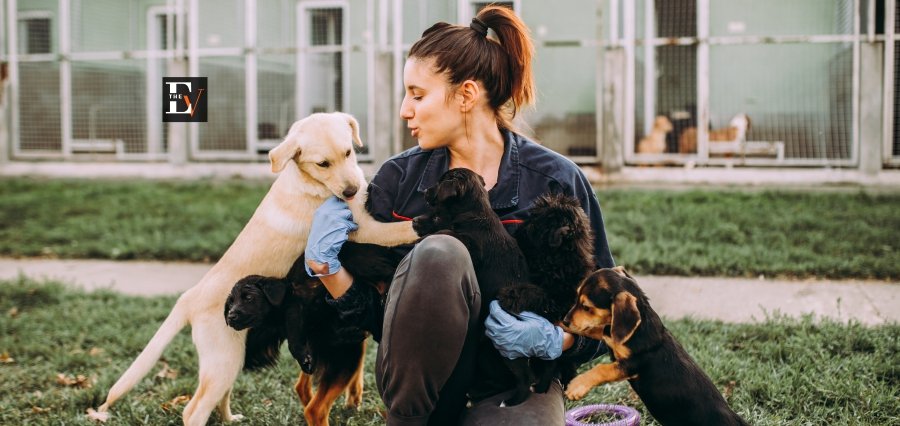From Rescue to Recovery
In a world where there is crisis and conflict around us, the stories of empathy become the source of change. These stories exist in real life and do not belong to some imaginary world; in fact, these narratives are the result of our day-to-day labor of making the world more than just a caring world.
The actions, which we call humane society efforts, are of many types. They include rescuing animals from cruel environments, restructuring neglected cities and towns, helping victims of violence, and cleaning up the planet. All of them are driven by the same belief that people can make a difference by being kind, doing good, and speaking up.
Let us explore by diving deeper into this article about how we can put humane efforts to make this planet a better place to live.
The Rescue of Abandoned Voices
Animals are often the most significantly neglected at the edges between rural areas, urban towns or cities. Recently, a grass-roots organization in the northern region of India made headlines when they rescued over 300 dogs from illegal breeding farms in inhumane conditions. The one tip-off escalated into several months of a complete operation, with the help of volunteers, vets, and law enforcement.
This wasn’t just an effort to save animals; it was an effort to change hearts and minds. The squad collaborated with local schools to promote animal welfare and responsible pet ownership in the community. The adoption rates in the area reached unbelievable levels, and a transformational change began to occur; animals ceased to be viewed as property, but as lives worthy of respect. This domino effect is the real strength of the humane society’s efforts that transform the behavior which we have not only in the animal world but also to each other.
Feeding With Dignity – Humanitarian Action in the Streets
Homelessness is a problem camouflaged in the glamor of many urban areas. In Bengaluru, a youth-led initiative has taken matters into its hands. College students cook and distribute hot meals to nearly 500 homeless people every weekend. But the point is not only nutrition, it’s connection.
Volunteers don’t just drop off food and leave. They sit, talk, and listen. They acquire names, listen to stories, and develop associations. There are cases when the recipients start to volunteer, preparing food or delivering it to others after time passes. This humanizes the act of kindness, as even in the most brutal of environments, we still express care towards each other.
Teaching to Be Empathetic
The lessons on compassion are set in a progressive school in Delhi. Acts of kindness, such as writing letters to sick children in hospitals, planting community gardens, and rounding up donations for animal shelters, can even include little kids as young as 6. They give bored and anxious children something to look forward to.
Local humane societies also collaborate with the school to offer empathy-building workshops that provide students with the opportunity to see things from a different perspective.
At the school, there is also cooperation with local humane societies to create empathy-building workshops, allowing students to explore an outlook beyond their own. The outcome is not producing smart offspring, but empathetic as well.
These are the dividends of early exposure to humane society efforts, the long-term benefit of instilling in future citizens a leadership approach that leads with their hearts.
Climate and Compassion – A Sustainable Life and not Sustainable Landscapes
In the Indian state of Kerala, a movement has emerged in which local fishermen, scientists, and activists have collaborated to conserve the coast while maintaining the rations that fisherfolk received earlier. Among the actions are reducing use of plastics, protecting species threatened with extinction, and replanting mangroves. Still, the cherry on top of this project is that it’s both environmentally-friendly and socially conscious. Local women in the villages are also employed as eco-tourism guides, now not only receiving an income, but also a voice, in the name of the environment.
Nonetheless, the best part of this project is that it is both ecologically conscious and socially active. Women in the local villages are also hired as eco-tourism guides, thus earning them an income as well as a voice to advocate for the environment.
It is also the combination of sustainability with equity where humane organisations can make the biggest difference.
Why These Stories Matter?
They are minor narratives in the broader context of global issues, but they belong to something much bigger: hope at work. They serve to remind us that humane society efforts are not a theoretical thing. Helpful and constructive ways to make a difference already exist, and it reflects humanity.
Heartwarming activities keep us grounded and reveal the best in humanity, showing that it is just human beings who work diligently to take care of others, not waiting to gain fame or reward.
Closing Remarks
We live in a networked society. Whatever is done to a stray dog, an abandoned child, and a ravaged forest happens to us as well. Humane society efforts are not charity work; however, their work is done under the tenets of justice, sustainability, and shared responsibility.
But now, as the world spirals towards one characterized by a climate emergency, digital dislocation, and shifting international standards, we require those efforts more than ever. However, very often, the tales about the activities of humane societies are misinterpreted or underestimated. But, we need to remember that they are not only stories of rescue but also stories of resistance, resilience, and rebirth.
Let’s tell them. Let’s support them. And, most critically, let’s join them.





